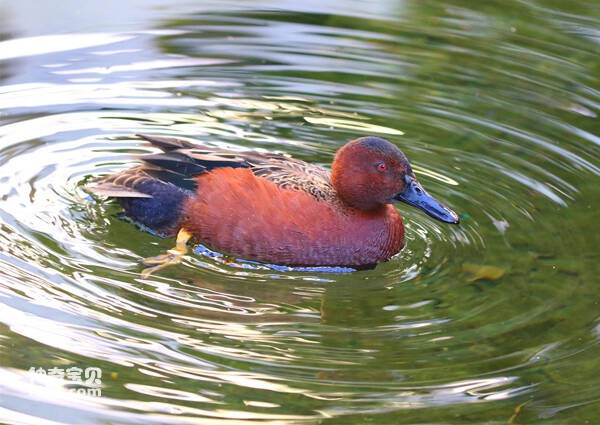Anas cyanoptera
IUCN
LCBasic Information
Scientific classification
- name:Anas cyanoptera
- Scientific Name:Anas cyanoptera,Cinnamon Teal
- Outline:Waterfowl
- Family:
Vital signs
- length:36-43cm
- Weight:280-500g
- lifetime:About 12 years
Feature
Feather color characteristics vary by age and sex, and are slightly different in different subspecies
Distribution and Habitat
Country of origin: Argentina, Bahamas, Barbados, Belize, Bolivia, Brazil, Canada, Cayman Islands, Chile, Colombia, Costa Rica, Cuba, Ecuador, El Salvador, Malvinas Islands, Guatemala, Mexico, Nicaragua, Paraguay, Peru, United States, Uruguay, Venezuela, Bolivarian Republic
Travelers: Antigua and Barbuda, Honduras, Jamaica, Panama, Puerto Rico, Turks and Caicos Islands, Virgin Islands.
Uncertain origin: Anguilla.
They like to live and move in inland waters such as rivers, lakes, reservoirs, river bays, ponds and swamps, especially in open waters rich in aquatic plants, and occasionally appear in coastal swamps.
Appearance
The cinnamon duck is 36-43 cm long, weighs 280-500 g and lives for 12 years. Feather color characteristics vary by age and sex, and are slightly different in different subspecies. The common characteristic is that the head, chest and underparts of adult males are generally purple-maroon, with a dark brown belly. The lower back and the rear of the bird's head are greenish-brown, while the wing coverings are blue. There are differences in the color of the shoulder feathers, with yellow and green stripes in the center. The eyes are red. From spring to fall, the male's forewings become more colorful. Autumn tail cover black.
Young ducks are similar in appearance to adult females, with white leads and green wing mirrors, and light blue coverts.
Details
The Cinnamon duck (Anas cyanoptera), also known as Cinnamon Teal, has five subspecies.

The duck usually congregates in small groups or pairs. During the spring migration, the number of colonies increases to as many as 20 individuals. Spring migration usually occurs in March and April. The cinnamon duck winters in the southwestern United States or in Mexico and South America. They breed and migrate in groups of about 20 individuals. They also mingle with other species of teal, teal, spoonbill, hock duck, red spoonbill, and the South American spotted green duck.
Female ducks consume more food than male ducks, feeding mainly on root-growing or aquatic arthropods in marshes and lake areas. They eat the flowers, leaves, fruits and roots of plants. They also eat invertebrates and arthropods.

The breeding season of the duck is in winter, and the nest is formed from plant stems into a half-moon shape. Each nest lays 4 to 16 eggs. Incubation time is 21 to 25 days. The young birds leave the nest for 49 days and are usually incubated alone by the female ducks. After hatching, they are still cared for by the female ducks, and the ducklings follow the female ducks for food. By the eighth week, the duckling's eyes had turned red. A year later, they reach sexual maturity and are able to reproduce.
Listed on the International Union for Conservation of Nature (IUCN) 2013 Red List of Threatened Species ver 3.1 - Not Threatened (LC).
Protect wild animals and eliminate wild meat.
Maintaining ecological balance is everyone's responsibility!








